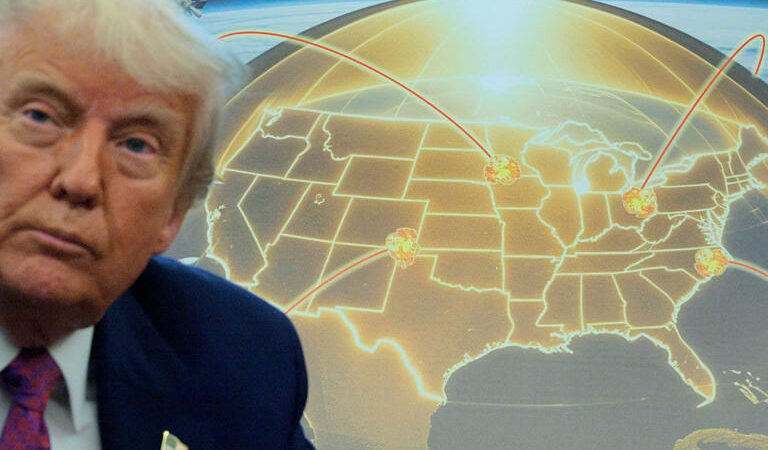President Trump unveiled the Golden Dome, a $175 billion missile defense initiative inspired by Israel’s Iron Dome but designed as a space-based shield against long-range threats from China, Russia, and others. Announced alongside Defense Secretary Pete Hegseth and Space Force General Michael Guetlein, the system aims to intercept ballistic, cruise, and hypersonic missiles in all flight phases using a multilayered “system of systems.”
Origins & Vision
Rooted in a January 2025 executive order, the Golden Dome revives Reagan’s “Star Wars” concept with modern AI and satellite tech. Trump seeks full deployment by 2030—an ambitious timeline experts doubt.
Architecture
Key components include:
- Custody Layer: 400–1,000+ satellites tracking global threats in real time.
- Attack Layer: 200 satellites with interceptors (missiles/lasers) targeting missiles in early stages.
- Ground Systems: Existing defenses like Aegis and GBIs for terminal-phase interception.
Estimated total costs could reach $831 billion over 20 years.
Key Players
A SpaceX-led consortium (with Palantir and Anduril) is favored for development. SpaceX may offer a subscription model, though Elon Musk has publicly denied involvement. Over 180 companies are engaged, including Boeing, Lockheed Martin, and Northrop Grumman.
Canada’s Role
Canada is in talks to join, extending North American coverage and boosting strategic impact.
Outlook
If realized, the Golden Dome would mark the first operational space-based missile shield, potentially reshaping global defense.
